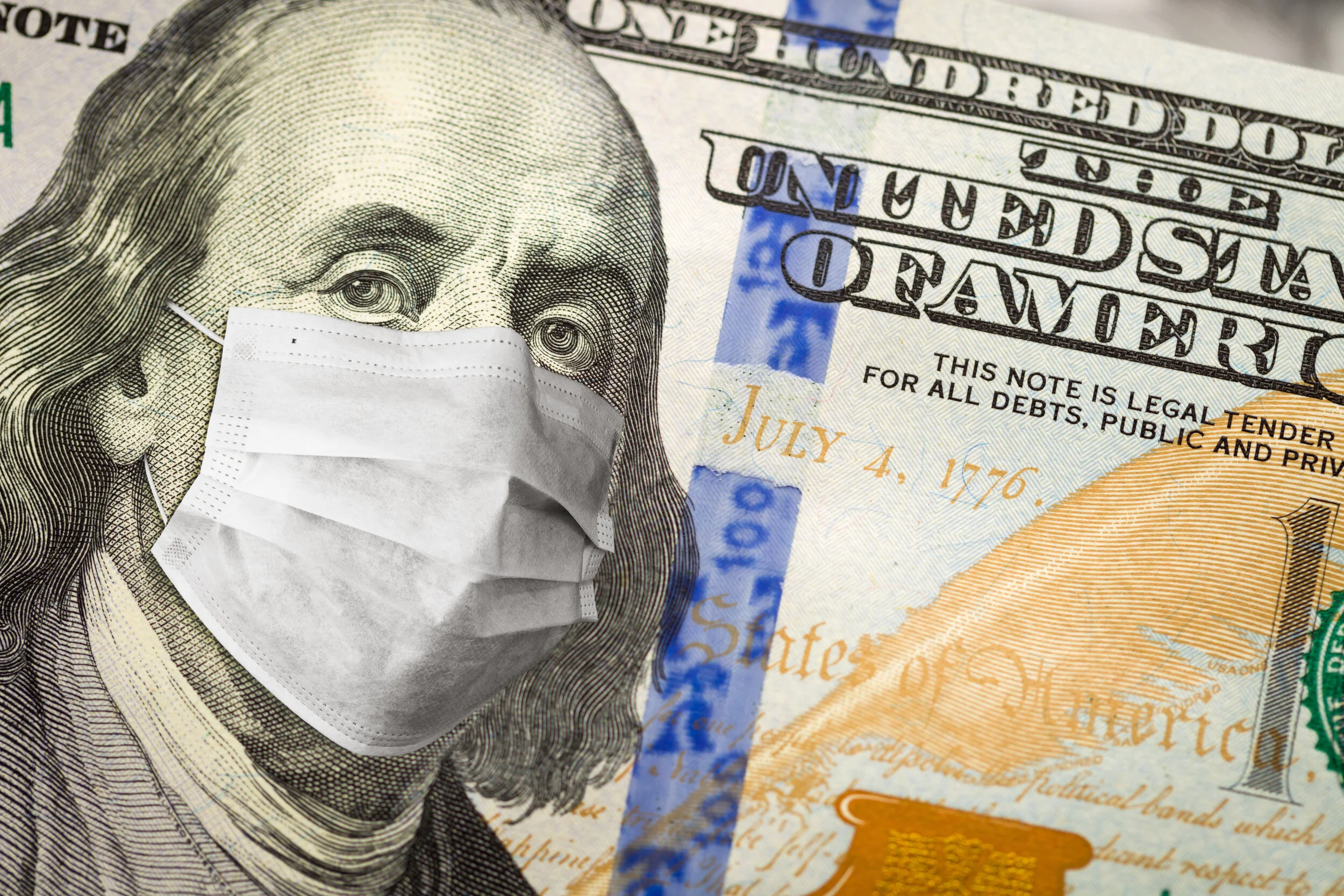PWBM estimates that the $1.9 trillion in spending in the full Biden relief plan would increase GDP in 2021 by 0.6 percent. Over time, the additional public debt resulting from the Biden plan would decrease GDP by 0.2 percent in 2022 and 0.3 percent in 2040.
Background: Marginal Propensities to Consume in the 2021 Economy
PWBM projects that the broad distribution of relief payments in the Biden administration’s proposed plan will flow largely into household savings and will produce only small stimulative effects, with 73 percent of the stimulus going directly into household savings. Sectors affected by the pandemic still face restrictions and are unlikely to grow from stimulus payments, while much of the rest of the economy is operating close to productive capacity.
PWBM Budget Contest: TEACHUP Early Childhood Education Grants
The TEACHUP program, proposed by Rick Miller, Ph.D. as part of the PWBM Democratizing the Budget Contest, would give grants to states in order to provide full-day preschool for four-year-old children at or below 200 percent of the poverty line. On a conventional basis, PWBM projects that TEACHUP would cost $92.4 billion over ten years and a total of $282.53 billion by 2050. However, on a dynamic basis that includes productivity effects and expansion of the tax base, PWBM estimates that the program would effectively pay for itself by 2050 by holding public debt nearly constant.
School Reopening During COVID-19: A Cost-Benefit Analysis for Philadelphia Suburbs
We estimate the average cost of a COVID-19 infection for four Philadelphia-area counties at $8,000 to $13,000, less than half of our national average cost estimate ($27,230). We estimate a trade-off between cost of infections to the community from in-person schooling versus the lost future earnings to students from closing schools. For example, if Montgomery county had implemented full in-person school in the fall, we project the costs of infection would have been at most $429 million. However, closing schools costs students as much as $4.4 billion in present value of future wages.
COVID: Trade-offs in School Reopening
We estimate that each month of school closures in response to the COVID pandemic cost current students between $12,000 and $15,000 in future earnings due to lower educational quality. We also estimate total value-of-life, medical, and productivity costs per infection at $38,315 for September 2020. Using these costs, we calculate the cost-benefit threshold to keeping schools closed for October at over 0.355 new expected infections in the community per student kept out of school.
Biden’s Healthcare Proposals
The Biden healthcare plan focuses on expanding access and affordability of insurance and decreasing prescription drug prices. We estimate that by 2030, relative to current law, the Biden plan would decrease the uninsurance rate from 10 percent to 6 percent, decrease private insurance premiums by 23 percent and out-of-pocket spending by 16 percent, and decrease the percent of the population that forgoes medical care from 7 percent to 4 percent. The Biden healthcare plan would increase net spending by $352 billion over ten years but would reduce debt by 4.5 percent over that period due to dynamic growth effects.
Analyzing President Trump’s Proposed Capital Gains and Dividend Tax Cut
PWBM estimates that reducing the top preferential rates on capital gains and dividends from 20 percent to 15 percent will cost $98.6 billion dollars over the ten year budget window. This tax cut will only benefit tax units in the top 5 percent of the income distribution, with 75 percent of the benefit accruing to those in the top 0.1 percent of the income distribution.
Dynamic Distributional Analysis of the Biden Platform
PWBM uses dynamic distributional analysis to evaluate the effects of the Biden platform on different age and income groups. We find that working-age individuals in the bottom 40 percent of taxable income benefit the most due to expanded health insurance, increases in housing subsidies, and lower cost of prescriptions in the Biden platform, while young, high-income individuals and wealthy retirees see net losses due to tax increases and lower returns on their savings.
Macroeconomic effects of Biden’s immigration policy
Using PWBM’s dynamic model, we show the macroeconomic effects of Presidential candidate Biden’s immigration proposal. By 2050, GDP increases by 1.7 percent in 2050 relative to current law while GDP per capita stays the same.
Presidential Candidate Joe Biden’s Proposed Child Tax Credit Expansion
Presidential candidate Joe Biden recently announced a proposal to temporarily expand the Child Tax Credit (CTC). We find that this proposal would cost $110 billion if implemented solely for calendar year 2021 and would cost $1.4 trillion over ten years if extended permanently. While higher income households are more likely to have qualifying children and would see larger average tax cuts ($1160 for the 90-95th percentile), lower income groups would see the largest relative benefit, with after-tax incomes increasing by 9 percent for the bottom quintile.
PWBM Analysis of the Biden Platform
Presidential candidate Joe Biden’s campaign has released a substantial list of policy proposals. PWBM finds that over the 10-year budget window 2021 – 2030, the Biden platform would raise $3.375 trillion in additional tax revenue and increase spending by $5.37 trillion. Including macroeconomic and health effects, by 2050 the Biden platform would decrease the federal debt by 6.1 percent and increase GDP by 0.8 percent relative to current law. Almost 80 percent of the increase in taxes under the Biden tax plan would fall on the top 1 percent of the income distribution.
The Impact of the Coronavirus Pandemic on Social Security’s Finances
PWBM projects that the ongoing coronavirus pandemic reduces the OASDI trust fund depletion date by four years, from 2036 to 2032, under the “U-shaped” recession projected by PWBM. If the recovery is faster (“V-shaped”), the trust depletion date falls by two years, from 2036 to 2034. The conventionally-measured OASDI 75-year actuarial balance worsens between 0.07 and 0.13 percent of future payroll.
Short-Run Economic Effects of the CARES Act
Without the CARES Act, PWBM projects that U.S. GDP would have fallen at an annualized rate of 37 percent in 2020 Q2, with the unemployment rate reaching 12 percent by 2020 Q3.
PWBM estimates that the CARES Act will dampen the short-term decline in GDP to a 30 percent annualized rate in 2020 Q2, with the unemployment rate reaching 11 percent by 2020 Q3.
We project that the CARES Act will produce around 1.5 million additional jobs by 2020 Q3 and increase GDP by $812 billion over the next two years.
President Trump’s Payroll Tax Holiday: Budgetary, Distributional, and Economic Effects
In response to the economic effects of the coronavirus, President Trump has proposed a payroll tax holiday that would temporarily eliminate all Social Security and Medicare payroll taxes through December 31st, 2020. PWBM projects that this payroll tax holiday would cost $807 billion if the holiday were run from April 1 through December 31, 2020.
Households in the bottom 20 percent of the income distribution—those households with the highest willingness to spend their tax savings—would receive about 2 percent of the total tax cut and only a third of these households would see any tax savings due to low levels of taxable income. Tax savings would also accumulate slowly over time relative to direct government spending.
PWBM estimates that eliminating payroll taxes would have little net impact on the economy in the short run and would reduce the size of the economy by 0.1 percent in 2030 and 0.2 percent in 2050 due to additional debt.
The Updated Biden Tax Plan: Budgetary, Distributional, and Economic Effects
Presidential candidate Joe Biden’s updated tax plan includes a “donut hole” payroll tax and repeals major provisions in the Tax Cuts and Jobs Act for higher-income tax filers.
Relative to current law, PWBM projects that the updated Biden tax plan would raise between $3.1 trillion (including macroeconomic effects) and $3.7 trillion (not including macroeconomic effects) over fiscal years 2021-2030 while decreasing GDP by 0.6 percent in 2030 and 0.7 percent in 2050.
We project that 54 percent of the updated Biden tax plan falls on the top 0.1 percent of the income distribution, corresponding to an average tax increase of more than $1.3 million per taxpayer and an 18 percent reduction in their after-tax income. The top 1 percent of the income distribution pays about 80 percent of the tax change.
Analysis of the Sanders Plan for Social Security
Democratic presidential candidate Senator Bernie Sanders has proposed changes to Social Security policy that increase benefits for low earners and increase program income by levying “donut hole” payroll taxes on those with earnings above $250,000 and by dedicating proceeds from a new tax on high investment income to the program.
The plan would reduce the conventionally-measured long-range imbalance by 2.3 percent of taxable payroll, leaving an imbalance of 1.2 percent of taxable payroll.
The plan would decrease GDP by 0.9 percent in 2030 and 1.0 percent in 2050 as a result of reduced capital formation due to the increased tax on investment as well as the new type of payroll tax (the “donut hole” tax) which distorts labor supply by more than the standard payroll tax.
Analysis of the Biden Plan for Social Security
Democratic presidential candidate Joe Biden has proposed changes to Social Security policy that would increase benefits, especially for low earners, while raising more revenues from high-earning individuals.
The plan would reduce the conventionally-measured long-range imbalance by 1.5 percent of taxable payroll, leaving an imbalance of 2.0 percent of taxable payroll.
The plan would decrease GDP by 0.6 percent in 2030 and 0.8 percent in 2050 due to a reduction in capital formation as well as a new type of payroll tax (the “donut hole” tax) that distorts labor supply by more than the standard payroll tax.
Health Insurance Policy Map: Indicators of the Economic Impact on Each State
PWBM’s new interactive health insurance policy map allows you to see how health insurance coverage, costs and outcomes differ across states.
States with lower income and lower employment rates tend to also have lower health insurance coverage and broad measures of health outcomes.
These differences imply that proposed changes to health insurance policies, including those proposed by presidential candidates in the 2020 election, will affect each state differently.
Senator Sanders’ Medicare for All (S.1129): An Integrated Analysis
Under current law, we recently projected that the percent of the population without medical insurance will more than double over the next 40 years, growing from around 10 percent today to over 27 percent by 2060. Under Sanders’ Medicare for All, the uninsured rate would essentially fall to zero by design.
We project that the Sanders’ Medicare for All would improve population health by 2060, reduce the share of the population that is seriously ill from 15 percent to 13 percent, increase life expectancy by 2 years, grow the population 3 percent, and increase worker productivity.
Taken literally, Sanders’ plan lacks a financing mechanism, which by long-standing CBO and PWBM convention implies deficit financing. Under deficit financing, we project that the Medicare for All Act would reduce GDP by 24 percent by 2060, despite large efficiency gains from lower overhead and reimbursement costs.
As a presidential candidate, Senator Sanders, however, has stated his intent to also increase taxes, although he has not specified the actual tax changes tied to Medicare for All. Accordingly, we also analyze two alternative financing mechanisms that mostly finance benefits received by workers. With premium financing, where most workers pay the same insurance premium (subsidized for lower-income workers)—similar to private insurance with no risk adjustments—we project that GDP increases slightly by 0.2 percent by 2060. With payroll tax financing, where workers with higher wages pay more, GDP falls by 15 percent.
We also provide various robustness checks to key model assumptions and plan design. For example, without the expansion of plan benefits to include long-term care or dental, but still including the elimination of most deductibles while covering all workers, GDP increases by 12 percent under premium financing. These results indicate that Medicare for All could be designed in a way that boosts economic growth.
Medicare for All: Comparison of Financing Options
We analyze a stylized mandatory single payer system (“Medicare for All” or “M4A”) system that provides the same benefits currently available under Medicare to the working-age population. This brief lays the foundation for future analysis of plans that expand Medicare benefits and coverage while also seeking additional cost savings.
We project that under current law, the percent of the population without medical insurance will more than double over the next 40 years, growing from around 10 percent today to over 27 percent by 2060.
We project that a shift to a mandatory single-payer system (Medicare for All) increases life expectancy by almost 2 years, grows the population size by 3 percent, and increases worker productivity through improved health, before macroeconomic feedback effects.
The choice of funding mechanism, however, is critical for macroeconomic performance. We project that financing M4A with a premium that is independent of a worker’s labor income would increase GDP by about 16 percent by 2060 through a combination of cost savings and productivity increases. In contrast, financing M4A with a new payroll tax that is proportional to a worker’s labor income would reduce GDP by roughly 3 percent, whereas deficit financing would reduce GDP by almost 15 percent by 2060.





















